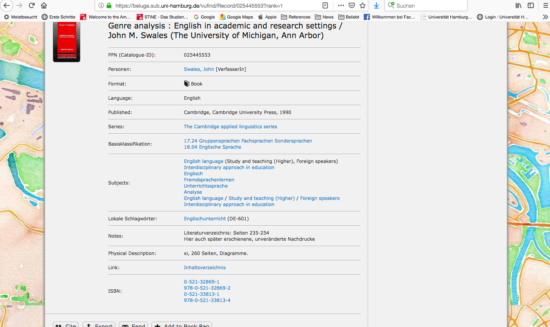One of the primary, essential features of academic writing is that it takes place within the discourse, that is, it refers to previous research. Indeed, your references and sources often attract a great deal of attention from those reading your papers, as it is one place where they can quickly see how attentive you are to details of rigorous academic research.
There are a number of tricky elements of this part of your academic paper, but one that is both easiest and most finicky is how you actually refer to the sources of your information. That is the topic of this brief post.
Why is it finicky? Because there are many things to remember and record, and because every field has its own patterns and conventions. Why is it easy? Because the conventions of each field are, in fact, easily discovered and once you know them, they are usually easily applied. I do not pretend to know all of the rules of each academic or scientific field, so for this I point you to the authorities in your field. There are three places to look/ask for the information needed (not necessarily in this order):
- your professor/instructor/examiner/tutor, i.e. the person reading your paper and setting the requirements.
- your institute’s website: many departments have their own ’style sheets‘ showing you what to do or referring you to standardized references for the field (e.g APA or Harvard, to name just two of many).
- authoritative academic journals from your field. Look at the lists of references/sources/bibliographies in these journals, or if you can, even look at their online submission policies.
Before you even go there, you might find it useful to think about the information that could or should be included. So let’s break down a typical listing. These images show you what you will find in a library search at the Staats- and Universitätsbibliothek Hamburg.


Really, it’s not that complicated when you look at it like this. And I’d like to encourage you here to record all of the information you have here, for it is potentially all helpful (imagine you remember what book or article you found a piece of information, but not where that book is located. Write down the library and book number, and you will find it faster!). But what do you really need to include in your paper? Surely, you don’t need the subjects or keywords? Not really. So, what goes into a full reference?
- Author
- Title of book, including subtitles, edition numbers, and/or volume numbers
OR
- Title of article, including subtitles plus title of journal or compilation (edited volume), with editor(s), volume number, etc.
- Date of publication
- Place of publication
- Publishing house
- If you found/read your source online, you will also need the website and date accessed.
That is just about everything necessary! How they are listed, as pointed out above, varies greatly from discipline to discipline. Find out what is common in your institute or field (or what is expected by your lecturer), and you are all set for both in-text citations, which generally only require author, date and page number, and full bibliographical references. The most important principles of citation are summarized in
ARC:
A: Be accurate about where each source comes from, including page numbers if you quote or paraphrase, or if you summarize information from a specific part of a text. Check that your readers and other scholars can locate the idea, information or image that you are referring to within the source you are citing.
R: Be rigorous in checking that every source you have borrowed from is listed accurately in your List of References and that a connection can be easily made between in-text citation and bibliography because they start with the same author and date.
C: Be consistent throughout your paper. Use the same procedure for all citations.
Last, but not least, let me point you to a fantastic resource made possible by the UHH Rechenzentrum and University Library. As a student of the University of Hamburg, you have access to the citation tool Citavi, which does most of the annoying details work for you. For more information and even to sign up for workshops, check out Citavi at SUB CvO Hamburg.


